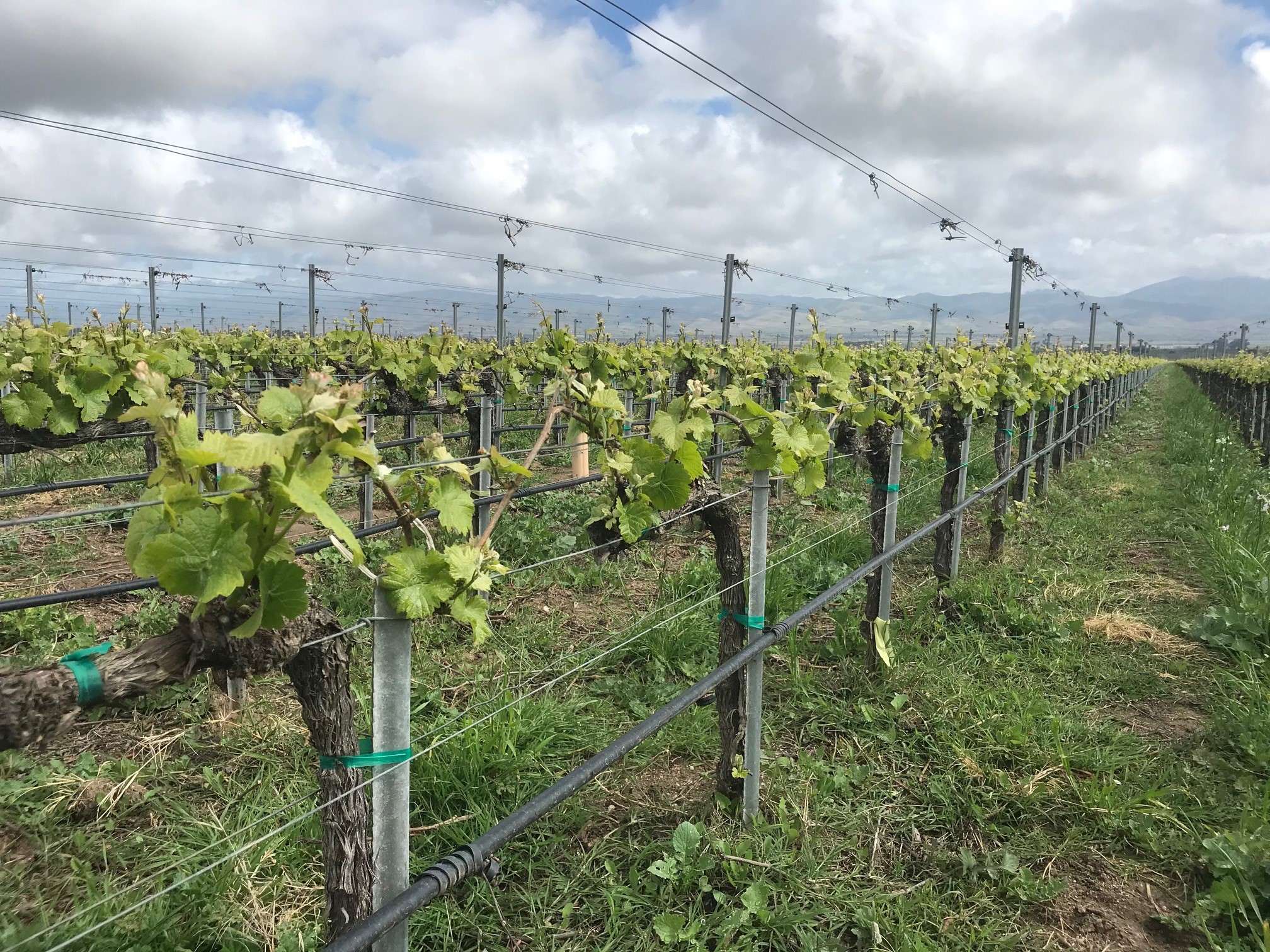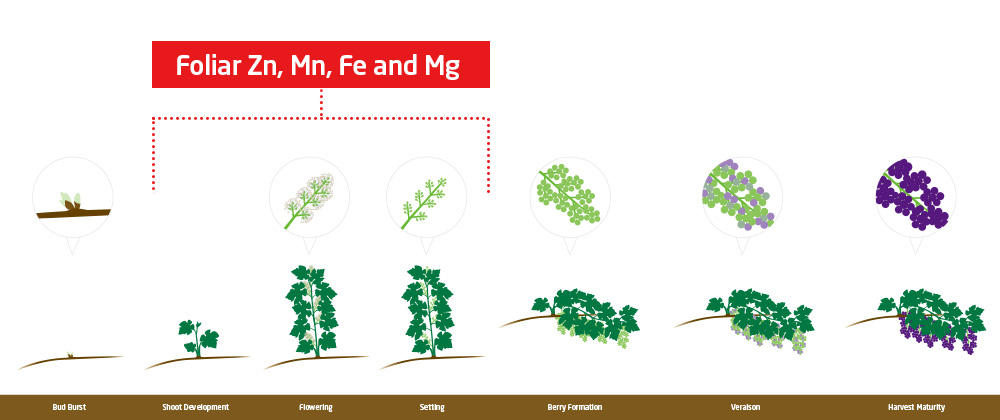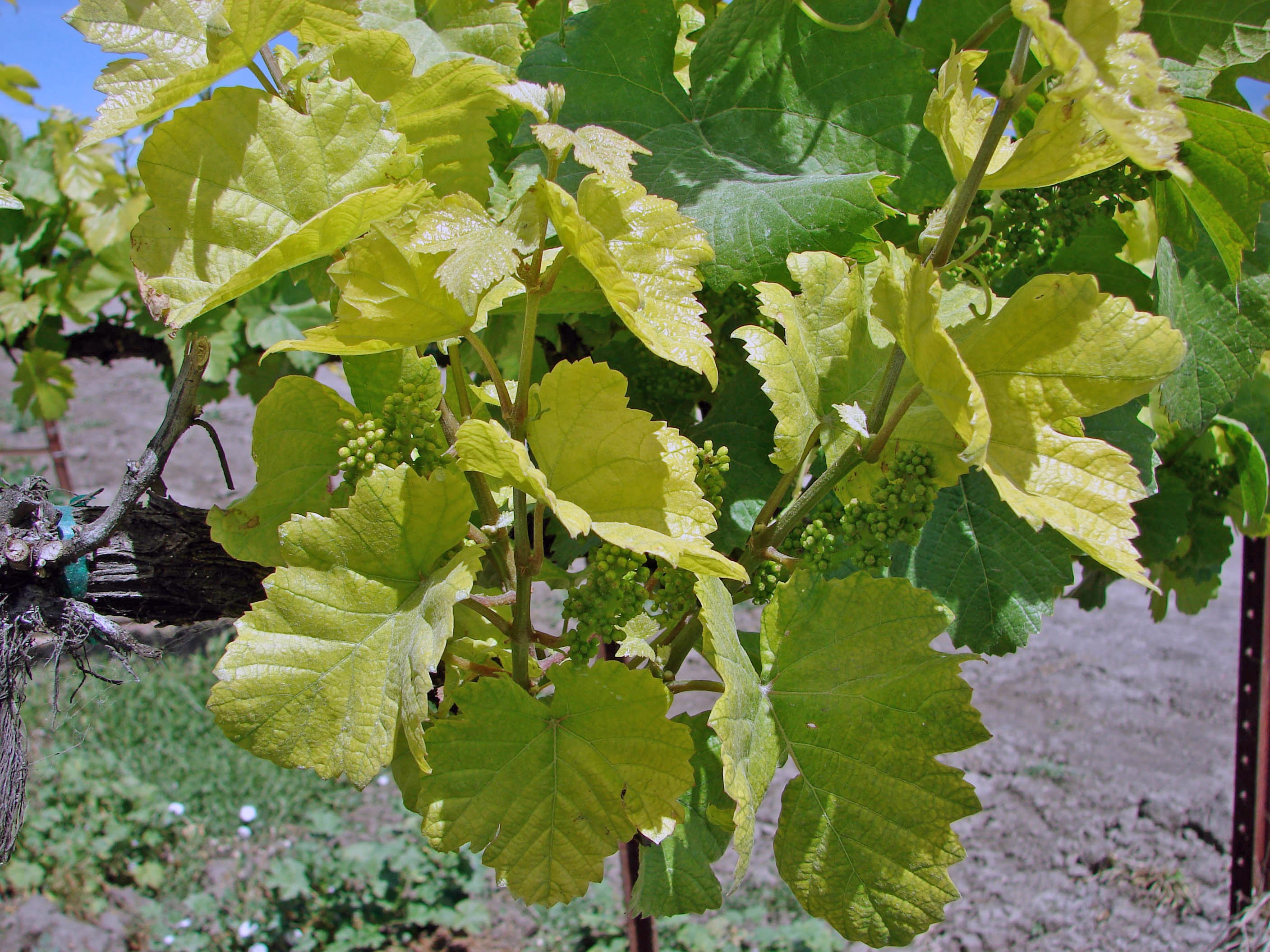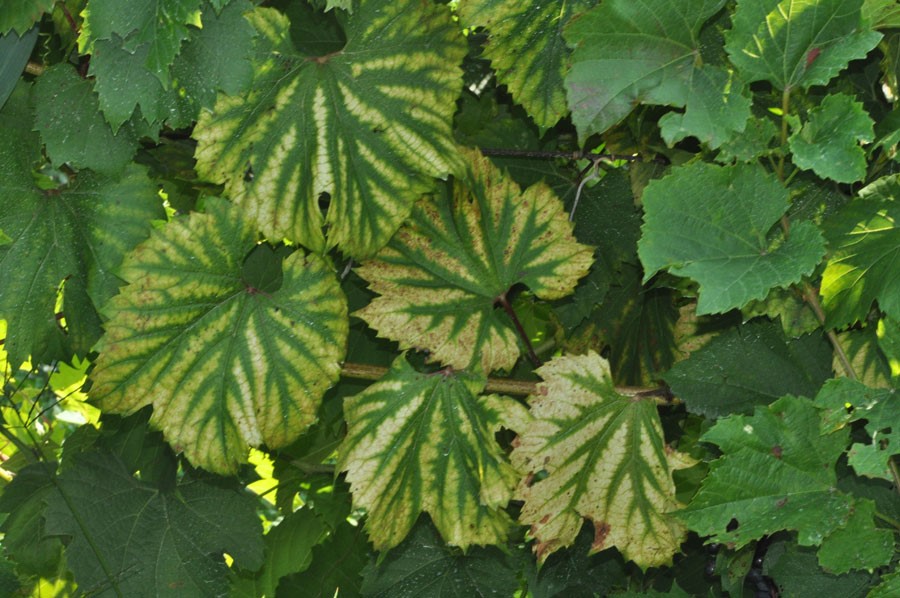Foliar Zn, Mn, Fe, and Mg on Grapes During Spring Leaf-Out
March 23, 2021
The Physiological Role of Micronutrients in Grapes
During shoot expansion in grape vines, there’s a short window to get the micronutrients critical to chlorophyll production, photosynthesis, and energy production into the leaves. A foliar application during leaf expansion helps kick start grape vines and carbohydrate production needed to maximize berry set and bunch size.
The first key nutrient is zinc, which is essential to cell division, protein synthesis, and auxin production needed for shoot expansion. Manganese is critical to photosynthesis and cellular respiration. Iron is essential for chlorophyll production, photosynthetic efficiency, respiration and nitrogen metabolism. Magnesium is a component of chlorophyll and needed to transport sugars from the leaves to the fruit. It also increases protein synthesis and enzyme activity.

Conditions Leading to These Deficiencies
Zinc deficiencies are common in grape plants all over the world. In areas with high soil pH levels, which inhibits nutrient uptake, it is more common to see zinc, manganese and iron. Root uptake of these micronutrients is an active process that is more efficient in warmer soils. Early leaf expansion for grapes often takes place when soil temperatures are still low, which limits micronutrient uptake. In low pH and sandy soil conditions, it is common to see magnesium deficiencies. High levels of calcium and potassium also reduce available magnesium.
Deficiencies of these nutrients will lead to chlorosis in the spring, particularly in younger leaves due to nutrient immobility in the plant. Magnesium induced chlorosis will appear on older leaves because of its high mobility within the plant.
Desired Tissue Test Values
Tissue tests for grapes are taken at bloom or veraison. Veraison may be reliable for sampling since nutrient levels are more stable during this stage. However, decisions about spring foliar applications will be based on samples pulled from veraison last season. For true nutrient status, leaf blade samples may be more accurate since there is less nutrient fluctuate during the day. These samples should be pulled from recently expanded leaves, opposite the cluster.
Target tissue test values for zinc and manganese levels is a minimum of 20 ppm; 60 ppm for iron; and 0.20% for magnesium.
Key Application Timings and Rates
Vegetation expansion is an excellent time for foliar sprays. With the first application at 6 inch shoot growth and continued applications past bunch shatter. Young leaves have less cuticular waxes, so foliar nutrient uptake is very efficient at this time. This is important for nutrients such as zinc, iron and manganese which have limited phloem mobility. If magnesium deficiency was present in the prior growing season, early season foliar sprays will ward off the negative impact on bunch development. It is always better to make foliar nutrient applications before deficiency symptoms occur.
BRANDT® Manni-Plex® is a highly effective foliar nutrient line with Zn, Mn and Fe products that fit well into leaf-out sprays. BRANDT® Organiplex™ is an OMRI Listed high efficiency foliar nutrient line that offers similar performance on sustainable crops. Both product lines offer for superior nutrient delivery, mobility and efficacy.
Generally rates around 1-2 quart work well on grapes and can be tank mixed with any fungicides or insecticides that may be in the spray tank at that time.
Key calcium formulations in these product line include:
- BRANDT® Manni-Plex® Fe
- BRANDT® Manni-Plex® Mg
- BRANDT® Manni-Plex® Mn
- BRANDT® Manni-Plex® Zn
- BRANDT® Organiplex® MicroMix
- BRANDT® Organiplex® 3% Mg
- BRANDT® Organiplex® 4% Mn
- BRANDT® Organiplex® 6% Zn
These products perform well at 1-2 quarts per acre application rate. The illustration in Figure 1 demonstrates key foliar nutrient timing windows on grapes.

Grape: Iron Deficiency

(source lodigrowers.com)
Grape: Zinc Deficiency

(source University of California Cooperative Extension)
Grape: Magnesium Deficiency

(source Ontario Ministry of Agriculture, Food, and Rural Affairs)
